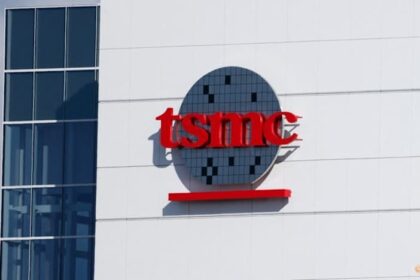Introduction: A Major Breakthrough in Breast Cancer Treatment
Triple-negative breast cancer (TNBC) is one of the most aggressive and difficult-to-treat forms of breast cancer, accounting for about 10-20% of all breast cancer cases worldwide. Unlike other subtypes, TNBC lacks the three most common receptors (estrogen, progesterone, and HER2) that are typically targeted by existing therapies. This makes treatment options limited, with chemotherapy remaining the mainstay. Now, a Taiwanese research team has announced a groundbreaking new therapy that could change the landscape for TNBC patients, especially those who develop resistance to standard treatments.
- Introduction: A Major Breakthrough in Breast Cancer Treatment
- Understanding Triple-Negative Breast Cancer: Why Is It So Challenging?
- Current Treatment Landscape: Global and Taiwanese Perspectives
- The Taiwanese Breakthrough: Targeting KIF2C to Overcome Drug Resistance
- Scientific and Clinical Context: Why Target KIF2C?
- Comparing the New Therapy to Other Innovations in Taiwan
- Genomic Profiling and the Future of TNBC Treatment in Taiwan
- Expert Perspectives and Patient Impact
- Challenges and Next Steps
- Broader Significance: Taiwan’s Role in Global Cancer Research
- In Summary
This article explores the science behind the new therapy, its significance in the context of global and Taiwanese cancer research, and what it could mean for patients in the years ahead.
Understanding Triple-Negative Breast Cancer: Why Is It So Challenging?
TNBC is defined by the absence of three key receptors: estrogen receptor (ER), progesterone receptor (PR), and human epidermal growth factor receptor 2 (HER2). This means that hormone therapies and HER2-targeted drugs, which are effective in other breast cancer subtypes, do not work for TNBC. As a result, chemotherapy has been the primary treatment option.
TNBC is known for its aggressive nature, higher rates of recurrence, and poorer prognosis compared to other breast cancer types. In Taiwan, studies show that TNBC accounts for about 10-15% of all breast cancer cases, with an average onset age of 46—significantly younger than the global average. Notably, 20% of TNBC cases in Taiwan occur in women under 40, highlighting the urgent need for better therapies for younger patients.
Despite a five-year survival rate of around 77% for TNBC patients, the recurrence rate is high (30-40%). Once the cancer returns, it often becomes resistant to standard chemotherapy drugs like paclitaxel, causing survival rates to plummet to just 8-12%.
Current Treatment Landscape: Global and Taiwanese Perspectives
For decades, chemotherapy has been the backbone of TNBC treatment. In recent years, however, several new therapies have emerged globally:
- PARP inhibitors: Target DNA repair mechanisms, but are only effective in a small subset of patients with BRCA1/2 mutations.
- Immune checkpoint inhibitors: Drugs like pembrolizumab (a PD-1 inhibitor) have shown promise, especially in patients whose tumors express the PD-L1 protein.
- Antibody-drug conjugates: These deliver chemotherapy directly to cancer cells, but are not specific to TNBC and are used in other breast cancer types as well.
Despite these advances, significant unmet needs remain, particularly for patients who develop resistance to chemotherapy. In Taiwan, the majority of TNBC patients still receive combination chemotherapy as first-line treatment, with limited access to newer targeted therapies due to cost and regulatory barriers.
The Taiwanese Breakthrough: Targeting KIF2C to Overcome Drug Resistance
On July 4, 2025, researchers from the National Health Research Institutes (NHRI) and National Tsing Hua University (NTHU) announced the development of a novel drug that directly addresses chemotherapy resistance in TNBC. The team, led by Professor Lily Hui-ching Wang and Dr. Hsieh Hsing-pang, identified a protein called KIF2C as a key driver of drug resistance in TNBC cells.
KIF2C is a type of kinesin protein involved in cell division. When overactive in cancer cells, it helps them evade the effects of paclitaxel, a commonly used chemotherapy drug. The new therapy is the world’s first cell-penetrating small-molecule inhibitor of KIF2C. By blocking KIF2C, the drug restores the effectiveness of paclitaxel and prevents cancer cells from developing resistance.
How Does the New Drug Work?
The drug is designed to enter cancer cells and inhibit the activity of KIF2C. This disrupts the cell division process, making cancer cells more susceptible to chemotherapy. Laboratory studies have shown that the drug works synergistically with paclitaxel, meaning the combination is more effective than either treatment alone.
Importantly, the research team has also applied the drug to other gynecological cancers, including ovarian, endometrial, and cervical cancers, suggesting broad potential beyond TNBC.
What Makes This Discovery Unique?
According to Dr. Hsieh Hsing-pang, the drug is the first of its kind globally—a cell-penetrating small-molecule inhibitor specifically targeting KIF2C. This represents a new class of targeted therapy for cancers that have, until now, relied almost exclusively on chemotherapy.
The development has garnered international attention and will be featured as the cover story in the August edition of the journal Developmental Cell.
Scientific and Clinical Context: Why Target KIF2C?
Drug resistance is a major challenge in cancer therapy. In TNBC, resistance to paclitaxel is often linked to changes in proteins that regulate cell division and survival. KIF2C, as a member of the kinesin family, plays a crucial role in the mitotic spindle apparatus, which is essential for cell division. Overexpression of KIF2C has been associated with poor prognosis and increased drug resistance in several cancer types.
By inhibiting KIF2C, the new Taiwanese drug disrupts the ability of cancer cells to divide and survive under chemotherapy stress. This approach is particularly promising for TNBC, where traditional targeted therapies are ineffective due to the lack of hormone and HER2 receptors.
Broader Implications for Precision Medicine
The discovery aligns with a growing trend in oncology: precision medicine. Advances in genomic profiling have revealed that TNBC is not a single disease, but a collection of subtypes with distinct genetic and molecular features. In Taiwan, comprehensive genomic profiling studies have identified frequent mutations in genes like TP53, PIK3CA, and APC among TNBC patients. These findings are helping to guide the development of new, more personalized therapies.
However, access to genomic profiling and targeted therapies remains limited for many Taiwanese patients, underscoring the importance of locally developed solutions like the KIF2C inhibitor.
Comparing the New Therapy to Other Innovations in Taiwan
Taiwan has emerged as a leader in cancer research, with several innovative therapies making headlines in recent years. One notable example is SOB100, an exosome-based drug delivery platform developed by Shine-On Biomedical. SOB100 targets HLA-G proteins, which are overexpressed in hard-to-treat cancers like glioblastoma and TNBC. This therapy uses engineered exosomes to deliver drugs directly to cancer cells, crossing barriers like the blood-brain barrier and minimizing side effects.
Both the KIF2C inhibitor and SOB100 reflect Taiwan’s growing expertise in precision oncology and its commitment to developing therapies tailored to the unique genetic and clinical characteristics of Asian patients.
Genomic Profiling and the Future of TNBC Treatment in Taiwan
Recent studies in Taiwan have highlighted the value of comprehensive genomic profiling (CGP) in breast cancer management. By analyzing hundreds of cancer-related genes, CGP can identify actionable mutations and biomarkers that predict response to targeted therapies. For example, high tumor mutational burden (TMB) and homologous recombination deficiency (HRD) are emerging as important predictors for immunotherapy and PARP inhibitor response, respectively.
In TNBC, mutations in TP53 and APC are particularly common and have been linked to poorer outcomes. The integration of CGP into routine clinical practice could help identify patients who are most likely to benefit from new therapies like the KIF2C inhibitor.
Expert Perspectives and Patient Impact
Professor Lily Hui-ching Wang, a leading member of the research team, emphasized the significance of the discovery for patients facing limited options:
“Once triple-negative breast cancer recurs, resistance to paclitaxel becomes a major obstacle, and survival rates drop dramatically. Our new drug offers hope for overcoming this resistance and improving outcomes for patients who have few alternatives.”
Dr. Hsieh Hsing-pang, director of the NHRI’s Institute of Biotechnology and Pharmaceutical Research, highlighted the global importance of the breakthrough:
“This is the world’s first cell-penetrating small-molecule inhibitor of KIF2C. Its synergy with paclitaxel could set a new standard for treating not only TNBC but also other gynecological cancers.”
The drug is currently undergoing preclinical testing, with support from Taiwan’s National Science and Technology Council. If successful, it could reach the market within five years.
Challenges and Next Steps
While the new therapy represents a major advance, several challenges remain:
- Clinical Trials: The drug must undergo rigorous clinical testing to confirm its safety and effectiveness in humans.
- Regulatory Approval: Navigating the approval process in Taiwan and internationally will require collaboration with regulatory agencies and industry partners.
- Access and Affordability: Ensuring that patients can access the new therapy, especially those in lower-income or rural areas, will be critical.
International partnerships, such as those seen with SOB100, may help accelerate the approval and distribution process, making innovative therapies available to more patients worldwide.
Broader Significance: Taiwan’s Role in Global Cancer Research
The development of the KIF2C inhibitor and other advanced therapies underscores Taiwan’s growing influence in the global biotech and oncology sectors. By focusing on precision medicine and leveraging local expertise in genomics and drug development, Taiwanese researchers are addressing unmet needs not only in their own population but also in the broader Asian and global context.
As more therapies move from the laboratory to the clinic, Taiwan is poised to become a key player in the fight against hard-to-treat cancers like TNBC.
In Summary
- Triple-negative breast cancer (TNBC) is an aggressive subtype with limited treatment options and high rates of recurrence and drug resistance.
- A Taiwanese research team has developed the world’s first cell-penetrating small-molecule inhibitor of KIF2C, a protein linked to chemotherapy resistance in TNBC.
- The new drug works synergistically with paclitaxel and has shown promise in preclinical studies for TNBC and other gynecological cancers.
- Comprehensive genomic profiling is helping to identify actionable mutations and guide the development of precision therapies in Taiwan.
- Taiwan’s innovations, including the KIF2C inhibitor and exosome-based therapies like SOB100, are attracting international attention and may reshape cancer treatment globally.
- The new therapy is expected to enter clinical trials soon, with hopes of reaching patients within five years.
- Challenges remain in clinical validation, regulatory approval, and ensuring equitable access, but the outlook for TNBC patients in Taiwan and beyond is brighter than ever.












